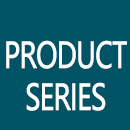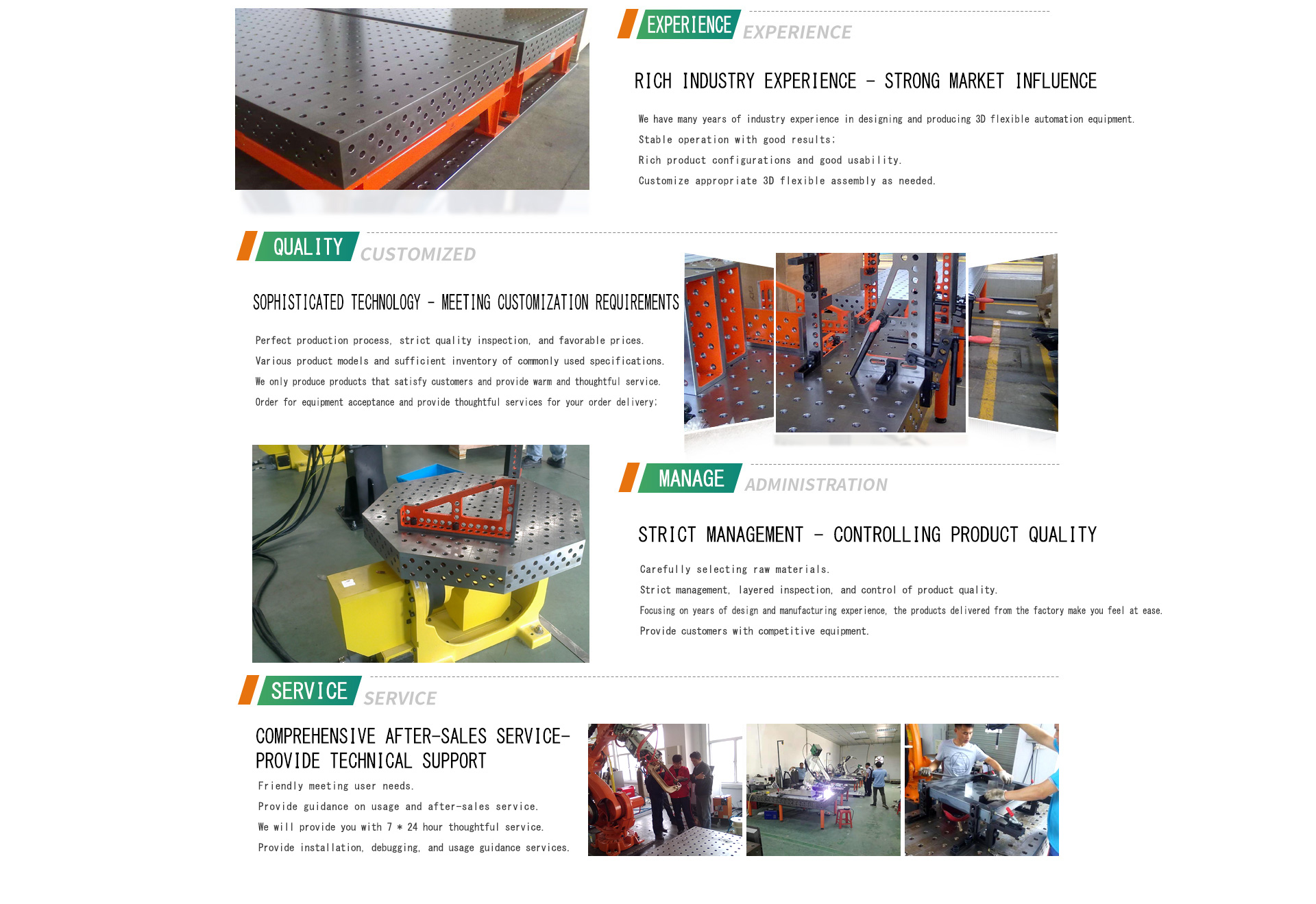Application of modular fixtures in flexible manufacturing systems
Combination fixture is a highly standardized, serialized, and universal process equipment. It is a set of pre manufactured standard components and assemblies with different shapes, specifications, sizes, and complete interchangeability, assembled according to the processing requirements of the workpiece. It can be disassembled, cleaned, and reassembled into new fixtures, and its application is very common, especially suitable for multi variety, small and medium-sized batch production. Due to the average design and assembly time of modular fixtures being 5% -20% of the time spent on specialized fixtures, modular fixtures are synonymous with flexible fixtures. Composite fixtures have become the development direction of modern fixtures due to their flexibility.
With the rapid development of the mechanical manufacturing industry, the replacement of products is becoming faster and faster. The traditional mass production mode is gradually being replaced by the small and medium-sized batch production mode, and the mechanical manufacturing system increasingly needs this flexible fixture with high flexibility. Foreign countries have regarded flexible manufacturing systems as an effective means of developing new products and as the main development direction of the mechanical manufacturing industry. The focus of flexibility is mainly on machine tools and fixtures, with modular fixtures being the focus of fixture flexibility.
1. Characteristics of modular fixtures
Composite fixtures can be divided into three series according to their structural types: hole series composite fixtures, groove series composite fixtures, and composite stamping dies. The groove combination fixture is divided into three types: 16mm, 12mm, and 8mm. This is what we commonly refer to as large, medium, and small combination fixtures.
The combination fixture has the following characteristics:
(1) Strong universality and reusability
Combination fixtures are developed under the condition of highly standardized machine tool fixture components. The components of the combined fixture have high dimensional and geometric accuracy, high hardness and wear resistance, and complete interchangeability. The assembly of modular fixtures is like building blocks. Due to the numerous changes in assembly and the endless changes in fixture structure, it can meet the processing requirements of various components.
(2) Wide application range
Combination fixtures can be applied to various types of work in the mechanical manufacturing industry, such as turning, milling, planing, grinding, boring, drilling, etc. They can also be applied to various types of work such as marking, inspection, assembly, welding, etc.
(3) Can reduce production costs and improve labor efficiency
After using the combined fixture, it can be disassembled and the components can continue to be used, which not only reduces fixture inventory and waste caused by fixture scrapping, but also saves time and cost of fixture manufacturing, thereby reducing production costs and improving labor efficiency.
2. Application of modular fixtures in manufacturing industry
2.1 Application of modular fixtures in CNC machine tools
With the development of the mechanical manufacturing industry, there are many special requirements for modular fixture CNC machine tools that are different from ordinary machine tools. For example, during rough machining, the fixture is required to have good stiffness and can withstand high-power and high-speed cutting; During precision machining, it is required to minimize the positioning and clamping errors of the workpiece in the fixture; In order to improve work efficiency, it is required that the combined fixture components can be integrated into large and medium components, installed on the same foundation plate, to adapt to single or multiple pieces processing at the same time. The hole system combination fixture is positioned by the pin hole, so the coordinate hole system is fixed, the assembly level is simple, and the position of the workpiece in the machine coordinate can be determined without measurement adjustment. When using a multi fixture foundation board, it is possible to assemble both a single large component fixture and multiple small and medium-sized component fixtures, with high work efficiency and good flexibility. The characteristics of hole series combination fixtures are suitable for supporting fixtures or accompanying fixtures of CNC machine tools and flexible manufacturing systems. Their application coverage in CNC exceeds that of groove series combination fixtures, occupying a dominant position.
2.2 Application of combined fixtures in welding
Grove is a famous manufacturing enterprise in Japan that produces hydraulic cranes for automobiles. In the past, all welding processes relied on manual welding temporary fixtures and specialized welding fixtures to complete. Now the company has designed a modular fixture system, with the core being a three-dimensional workbench that installs welded parts, various standard angle supports, support blocks, and various accessories. This platform is designed as a solid platform and made of high-strength steel with reinforcing ribs, processed to strict tolerances to ensure stability and flatness within 0.035mm/m. The three-dimensional workbench is made into several sizes and designed to be used separately or connected together with bolts to accommodate larger welded parts. Each workbench serves as the main structural component of the welding fixture, consisting of 28mm and 10mm holes distributed throughout the workbench and a network of holes around it. When a more accurate hole spacing is needed, auxiliary boards with a mesh density of twice can be used. These boards have a mesh hole spacing of 50mm -6Omm and can be easily installed on a 3D workbench. These mesh hole systems are designed to install structural parts and fixture components on the workbench and maintain a hole position accuracy of ± 0.025mm, with an overall accuracy of ± 0.05mm. In addition to the mesh hole system, some fixture components are also made into 28mm wide groove systems, which allow for precise positioning of different fixture components to adapt to the positions required for welding parts.
In order for each welder to easily understand each welding task, there is a fixture assembly manual on each welding site, which includes all photos, graphics, and relevant information for each type of component. Every time a specific task is repeated, the welder simply refers to this manual as a guide for assembling the required fixtures. Today, with the integration of fixture design functions into the CAD system, the welder and tool engineer work closely together to integrate the spot welding fixture with the CAD system to prepare the necessary production documents for each welding fixture.
2.3 Application of combined fixtures in processing special workpieces
In the process of using modular fixtures, for some parts with complex shapes, large dimensions, high precision requirements, and difficulties in positioning and pressing, which cannot be completed solely using modular fixtures, the following methods can be adopted:
(1) Design specialized parts for use with modular fixture components. The most commonly used and commonly used ones are the design and manufacturing of specialized positioning mandrels and drilling templates. Due to the fact that the positioning of the workpiece hole is not the final process in most cases, and the hole size is not achieved, there is a grinding allowance left. Due to different product drawings and process requirements, the grinding amount left by the holes varies, and the combined fixture components cannot meet the requirements. To ensure positioning accuracy, a dedicated positioning spindle or positioning disc is designed and manufactured. The lower part is matched with the first level accuracy of the combined fixture components, and the upper part is matched with the part holes, thus solving the problem of positioning accuracy.
(2) Adopting a semi combined fixture form. For some workpieces with complex processing content and high precision requirements that cannot be solved with combination fixtures and specialized fixtures, semi combination fixtures can be used.
3. The development trend of modular fixtures
(1) Multifunctional modularization of fixture components: The proportion of multifunctional modular unit bodies that can be used alone or in combination with other components will further increase. For example, the various modular unit bodies currently used, such as positioning and clamping seats, positioning and pressing supports, precision vises, etc., have comprehensive functions of positioning, clamping, and adjustment. They can be used alone or assembled together, with T-shaped foundations The square box can be assembled into a fixture that can hold multiple identical or different workpieces at once. Using this fixture can reduce the downtime of the machine tool and maximize the efficient performance of CNC and machining center machines.
(2) Integration of specialized fixtures and modular fixtures: The multifunctional nature of modern processing equipment enables highly centralized processing and enables the completion of multiple processes after workpiece positioning and clamping. This requires a universal and reusable modular adjustable fixture system. It is composed of a series of identical and standardized components and assemblies, which are assembled into various forms, structures, and reusable fixtures for single piece or small to medium batch production. This fixture system preserves various advantages of modular fixtures, and assembly is as simple and reliable as specialized fixtures. In order to facilitate the positioning connection between the fixture and the machine tool, the fixture base has the same standard positioning connection position, making it specialized and modular fixtures develop towards integration and combination to meet the needs of modern processing equipment.
4. Summary of the modular fixture industry
With the rapid development of science and technology, advanced manufacturing technology continues to develop. Flexible manufacturing technology and integrated manufacturing technology will be the mainstream of modern advanced manufacturing technology development. In the future, the manufacturing process will become more intelligent, and manufacturing enterprises will have a stronger ability to adapt to the market. Flexible manufacturing technology, due to its efficient and flexible characteristics, has become the foundation for implementing agile manufacturing, concurrent engineering, lean production, and intelligent manufacturing systems, and its application is becoming increasingly widespread. It has become the core technology in the entire field of mechanism manufacturing. Combined fixtures, due to their flexibility, have become the main development direction of modern fixtures and play an important role in the manufacturing industry. Our company is a professional provider of integrated solutions and manufacturing for welding platforms, 3D flexible combination fixtures, 3D flexible welding platforms, flexible welding fixtures, 3D flexible welding fixtures, welding fixtures, robot welding platforms, robot welding fixtures, and welding robot workstations.






